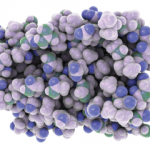The spike protein of SARS-CoV (SARS-S) induces ACE2 shedding via a process tightly linked with TNFα production.19 In an in vitro study, IL-6 and TNFα were up-regulated by the recombinant S protein of SARS-CoV, suggesting that TNF inhibitors and IL-6 antagonists may potentially reduce the inflammatory storm on SARS-CoV-2 and lung damage.20
In our cases, it is possible that pretreatment with etanercept for rheumatoid arthritis in our female patient could have resulted in a blunted IL-6 response indirectly, which may have contributed to her mild case of COVID-19. In support of this hypothesis is the patient’s normal plasma IL-6 level and a minimally elevated CRP, while other inflammatory markers remained within normal limits. Sha et al. demonstrated in a cohort of HIV patients pretreated with etanercept, TNFα and IL-6 levels were blunted after stimulation with IL-2.6 Our case also suggests the possibility that a TNFα inhibitor, such as etanercept, could minimize or abort the potential cytokine storm.
In contrast, COVID-19 infection in the husband was critical. The drug, secukinumab, he was receiving may have aggravated the viral infection. Secukinumab is a human IgG1κ monoclonal antibody that binds to the protein, IL-17A. In host defense, IL-17A has been shown to be mostly beneficial against infection caused by extracellular bacteria and fungi.21 The primary function of T helper (Th) 17 cells appears to be control of the gut microbiota, as well as the clearance of extracellular bacteria and fungi.22,23
IL-17A and IL-17 receptor signaling has been shown to play a protective role in host defenses against many bacterial and fungal pathogens, including Klebsiella pneumoniae, Mycoplasma pneumoniae, Candida albicans, Coccidioides posadasii, Histoplasma capsulatum and Blastomyces dermatitidis.24 However, IL-17A seems detrimental in viral infection, such as influenza, by promoting neutrophilic inflammation.25
It appears the clinical picture of COVID19 is characterized by a strong immune response in the lung parenchyma with mononuclear cells, mainly lymphocytes, more than the direct effect of viral replication.26
An autopsy study of these cases suggested that over-activation of T cells, manifest by an increase of Th17 and high cytotoxicity of CD8 T cells, accounts in part for the severe immune injury. Although the study suggested involvement of Th17, no Th17-associated cytokines were measured in our case. Th17 cells and IL-17 are involved in cytokine storm response. Both IL-1β and TNFα promote Th17 responses, leading to vascular permeability and leakage. Wu et al. proposed that inhibiting Th17 response may be beneficial.27



